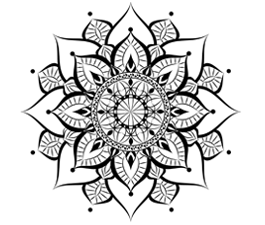This is yet another topic relating to women’s health and relates to all the cues of ‘tucking in’. In my classes I don’t use cue ‘tuck in your tailbone’. Instead I use “lengthen your tailbone’. ‘Tucking in’ can, in some cases, have damaging and adverse effect. The students are supposed to ‘lengthen’ the tailbone towards the floor and surrender to gravity. Tucking in may mean drastic pelvic movement that may take the pelvis out of the alignment and in female pelvic health, it should be avoided.
Instructions:
1. Stand with feet hip-distance apart, knees bent. Keep the arches of the feet well lifted.
2. You can use your arms to detect the bony pelvic structure, by resting one palm on your sacrum and the other on your pubic bone.
3. Inhale as you imagine that you have a long tail extending from your sacrum down into your mat. This will deepen your lower back as you lift your heart space.
4. Lift and separate the toes. Exhale and deeply press the feet down into the mat. Inhale feel the abdominal muscles lengthen and stretch.
5. Exhale and let the imaginary tail go between your legs. Bend your knees and squeeze your buttocks as you move the tail forward.
6. Now release the hands and bring the hands into this circular motion of the whole body, as you inhale feeling the extension of the spine and opening the chest, and moving the arms back behind you.
7. As you exhale curving the spine a bit, moving the imaginary tail between your legs and arms in the same direction (in front of you).
8. If the image of a tail doesn’t serve you, perhaps use the arms to help with the circular movement of the hip.
9. Sense the rhythmic contraction and release of the large muscles, a strengthening energy warming up your spine, the pelvic organs and your body.
10. Keep the breath flowing freely as you repeat the circles, and the sleeping snake (in Tantra metaphor for the sleeping cosmic energies at the base of the spine).
This practice promotes fluidity of movement and builds the strength in the muscles that support the whole of the spine. The use of the breath together with the movement truly revitalises the whole body.


Leave A Comment